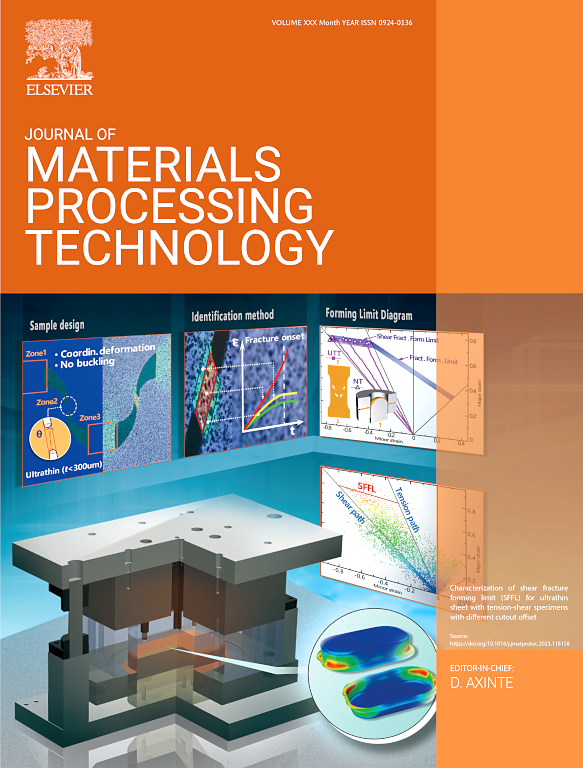Curvature, microstructure, and mechanical property of an asymmetric aluminium profile produced by sideways extrusion with variable speed
IF 6.7
2区 材料科学
Q1 ENGINEERING, INDUSTRIAL
Journal of Materials Processing Technology
Pub Date : 2025-02-01
DOI:10.1016/j.jmatprotec.2024.118699
引用次数: 0
Abstract
Sideways extrusion is an advanced technology for one-step production of curved profiles eliminating the need for subsequent bending processes. Its effectiveness in controlling the bending curvature of symmetric products has been well established in prior research. However, there is no report on the effect of asymmetric product shape on bending curvature and still lacking quantitative analysis of welding quality and microstructure of the extrudate for the sideways extrusion, limiting its application scope. In this study, an asymmetric Z-shape aluminium profile was manufactured using sideways extrusion at different speeds and the corresponding numerical simulation was conducted to analyse the extrudate shape, welding quality, microstructural and mechanical properties. The bending mechanism of extrudate, resulting from the non-uniform metal flow during extrusion, was identified. The curvature radius was found to depend on the average exit velocity and the velocity gradient along the transverse direction both of which increase with increasing extrusion speed. Improvements in welding quality and increased recrystallisation fraction during extrusion were quantitatively predicted using developed subroutines and these predications aligned well with the results from post-extrusion examination. In addition, tensile test results differed for profile sections extruded at different speeds, which were attributed to the combined effect of welding quality, work hardening, recovery and continuous dynamic recrystallisation.
求助全文
约1分钟内获得全文
求助全文
来源期刊

Journal of Materials Processing Technology
工程技术-材料科学:综合
CiteScore
12.60
自引率
4.80%
发文量
403
审稿时长
29 days
期刊介绍:
The Journal of Materials Processing Technology covers the processing techniques used in manufacturing components from metals and other materials. The journal aims to publish full research papers of original, significant and rigorous work and so to contribute to increased production efficiency and improved component performance.
Areas of interest to the journal include:
• Casting, forming and machining
• Additive processing and joining technologies
• The evolution of material properties under the specific conditions met in manufacturing processes
• Surface engineering when it relates specifically to a manufacturing process
• Design and behavior of equipment and tools.
 求助内容:
求助内容: 应助结果提醒方式:
应助结果提醒方式:


